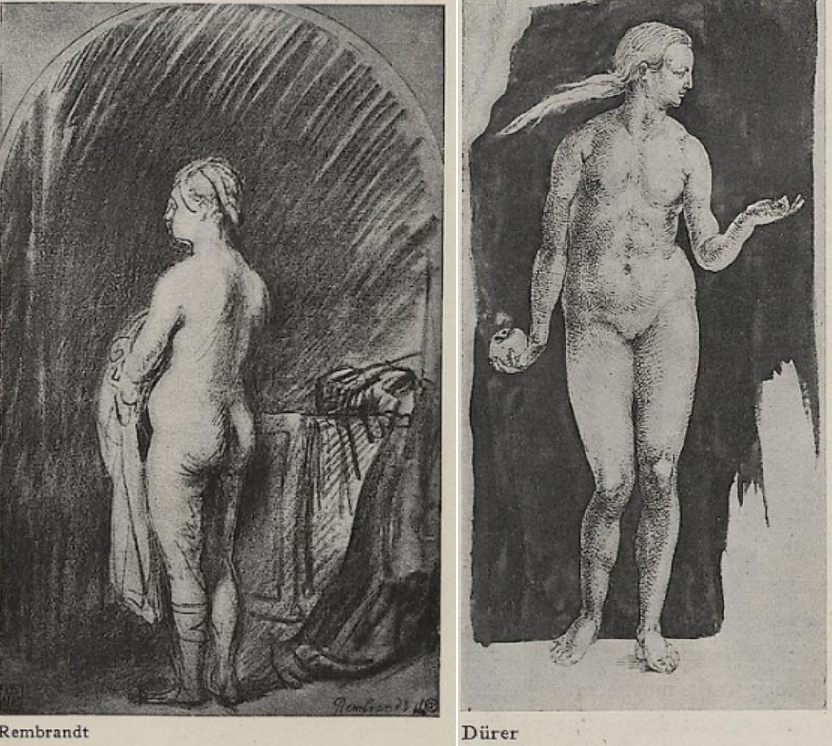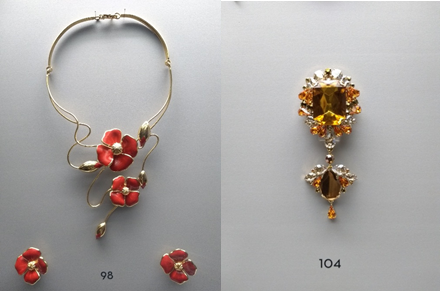Formal Analysis
by Julia Hasenkampf (translated into English by Rebekka Eick)
Definition
“Formal analysis” /”shape analysis” (German: “Formanalyse”, origins: Latin “forma” (“form”, “shaping”) and Greek “ἀνάλυσις” “análysis” (“dissolution”)) is also called “formalism”. It describes, in addition to the iconographic and historical analysis approaches, an art historical method as part of the interpretation and further classification of a work of art, based on the visual examination of purely formal qualities such as composition, color, lines and texture, forexample. Aspects and references as well as the historical context of the work are secondary.
Main representatives
Heinrich Wölfflin and Alois Riegl are the most important representatives of formalism, who developed it into an art historical method. Herman Grimm (1828-1901), Bruno Meyer (1840-1918), Paul Brandt (1861-1932) and Giovanni Morelli (1816-1891) are also worth mentioning.
Image comparison and FormalismHeinrich Wölfflin (1864 – 1945, a Swiss art historian) saw the possibilities of style recognition in the shape of a work of art and in human perception potential. The optical knowledge is gained through the own sensory performance of the organs. However, seeing must be learned. Wölfflin’s method analyzes forms of representation in a comparative mannerand without personal evaluation, concentrating just on the perception of form and structure.
The formal analysis serves the purpose of stylistic classification, the interpretation according to formal characteristics, the determination of a specific style of expression, as well as the attribution of the work of art in order to find groups of characteristics (epochs and genres). Knowledge is gained through comparative vision.
“It [here Wölfflin refers to the actual writing on the basic concepts of art history – remark of author] does not analyze Leonardo’s or Dürer’s beauty, but does analyze the element in which this beauty has taken shape. ” [1]
Wölfflin developed a binary system of formal image comparison in order to explain works of art from different genres (painting, architecture, sculpture). Using five opposing pairs of terms or”basic terms” such as area – depth, linear – picturesque, diversity – unity, closed – open, clarity – ambiguity and movement, he assigned works of art to either the Renaissance or Baroque style, thus developing a history of style.
The art style was grouped by personal style, school style, country style, “race” style. [2]
Alois Riegl (1858-1905, an Austrian art historian, curator of monuments and representative of the Vienna School of Art History) is considered the second largest formalist of the 19th century. The central concept of his theory is the concept of “Kunstwollen” (art- will/desire) as the defining force of an epoch of style. It contradicts the classic art concept, which prefers to emphasize leading art epochs, and treats all others as predecessors, epigones or decay epochs. With “Kunstwollen”, Riegl explains the striving of every art epoch in human development for a unique form of design. Like Wölfflin’s, his theory is based on coupled terms: optical – haptic, objective – subjective, organic – crystalline, indulgent – distant, etc.
[1] Wölfflin, Heinrich (1915): Kunstgeschichtliche Grundbegriffe: das Problem der Stilentwickelung in der neueren Kunst, München, S.14. Available at: https://digi.ub.uni-heidelberg.de/diglit/woelfflin1915/0032 (Accessed: 18.11.2019).
[2] Cf. Ibid., S. 6
Literature
Bader, Lena: Bricolage mit Bildern. Motive und Motivationen vergleichendes Sehens, in Vergleichendes Sehen. München, 2010.
Das Große Kunstlexikon von P.W. Hartmann. At: http://www.beyars.com/kunstlexikon/lexikon_3048.html” \t “_top (Accessed: 18.11.2019).
Panofsky, Erwin: Lektion I: Die Renaissance als Leitkultur (1400-1570), Heinrich Wölfflin, in arthistoricum.net (Accessed: 07.03.2019).
Wölfflin, Heinrich: Kunstgeschichte Grundbegriffe. At: https://archive.org/details/kunstgeschichtli00wluoft/page/n1 (Acessed: 07.03.2019).
Формальный анализ художественного произведения. In: Искусствовед.ru. At: http://iskusstvoed.ru/2017/11/08/ (Accessed: 06.03.2019).


Left image: necklace with poppy flowers. According to Wölfflin's criteria, it represents an object of open form. Defining properties: asymmetrical, no straight lines, no vertical or horizontal, but diagonal directions are recognizable, free arrangement of flowers, flexible form without a frame.Image
Right image: A crystal pendant. Closed form. Properties: construction with central perspective:the large crystal is the main object of the composition, the remaining elements are smallerand are directed around it; smaller stones form a frame; symmetry; color balance (warm, golden-brown palette); uniform light shade; vertical alignment of the object (downward movement).
The attached pictures are the authors (Julia Hasenkampf) own pictures from the exhibition "Bijoux Bijoux! Modeschmuck von Chanel bis Dior" that took place from 13.10.2018 to 27.01.2019 in the Kunstgewerbemuseum in Berlin.